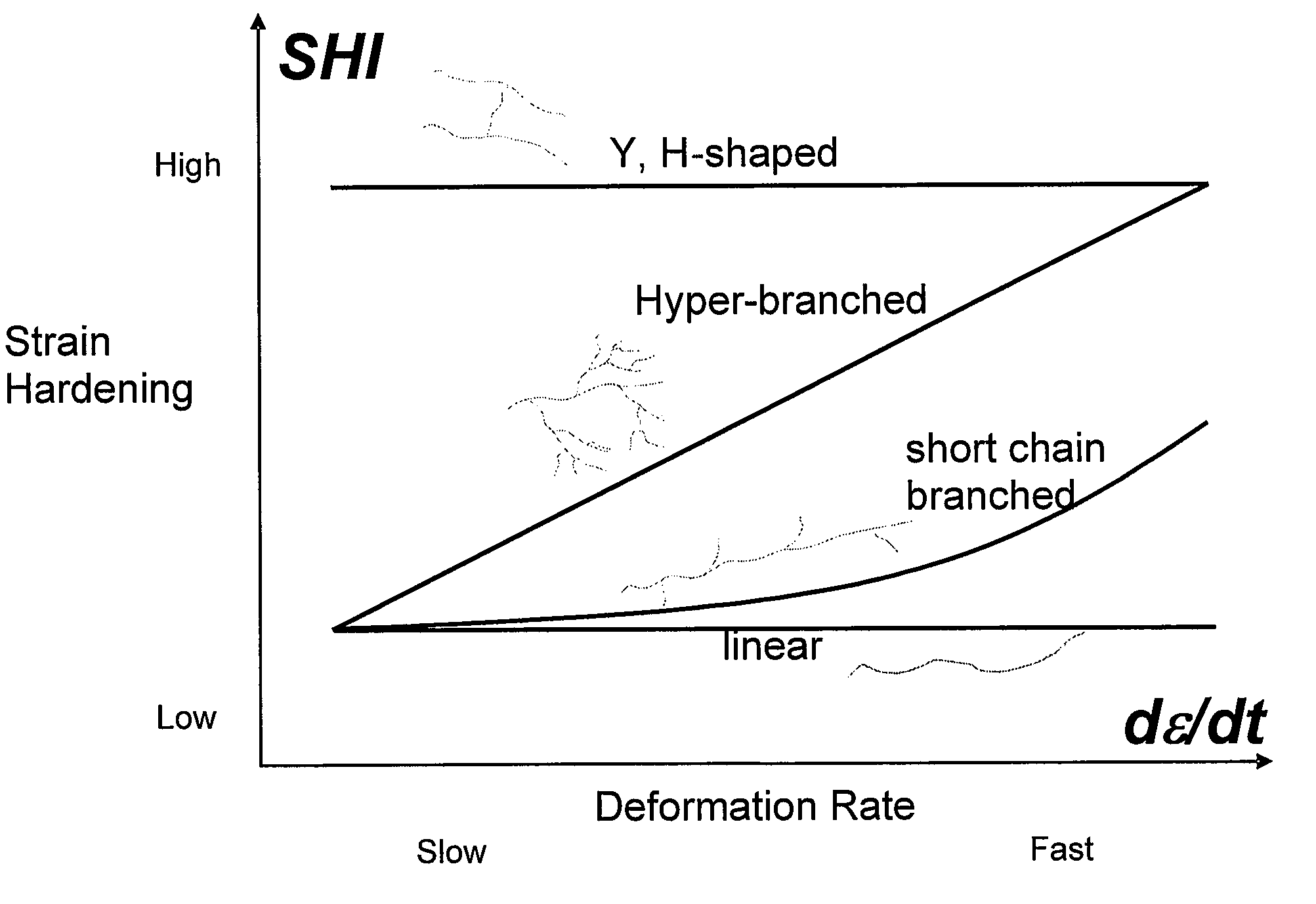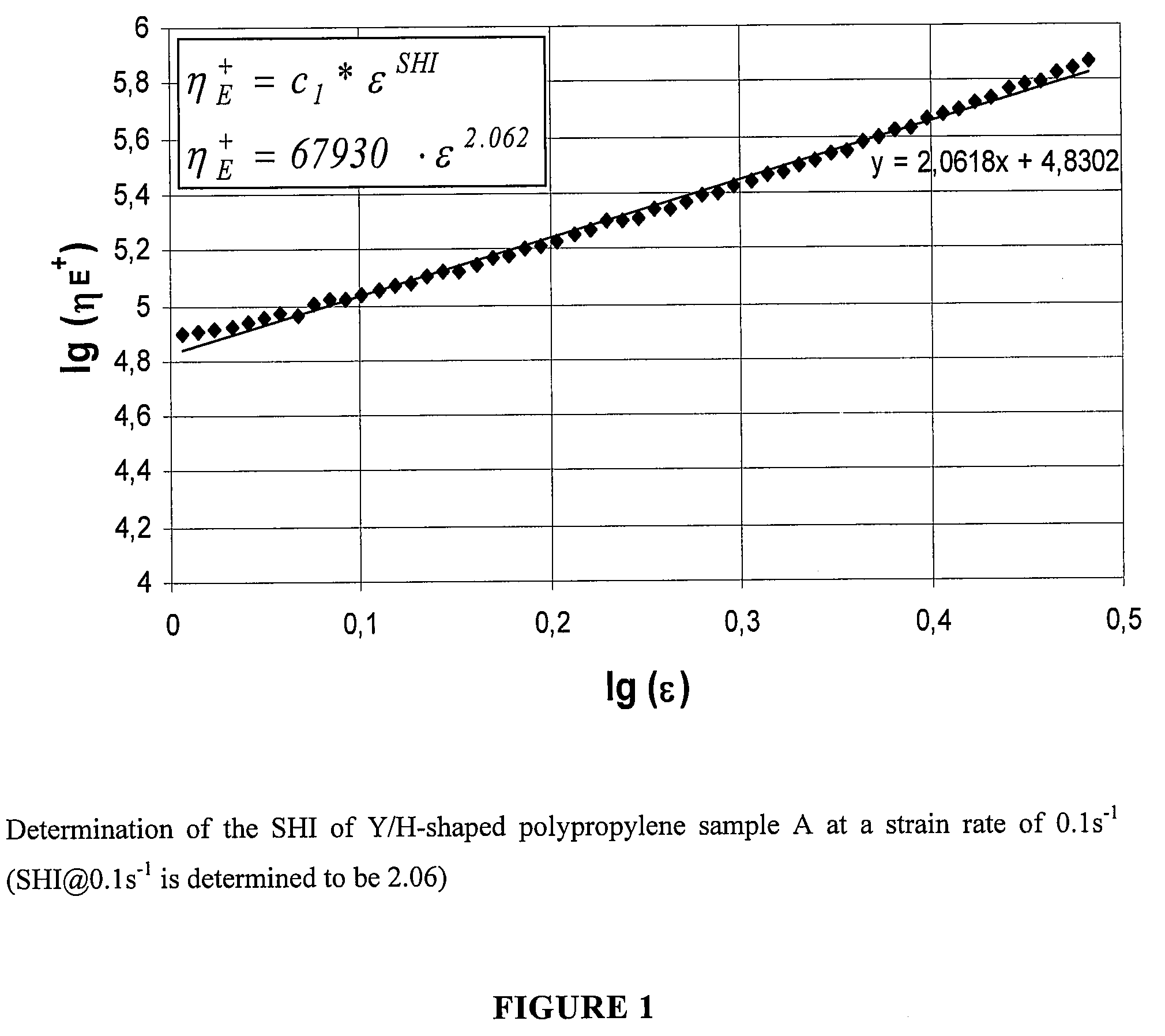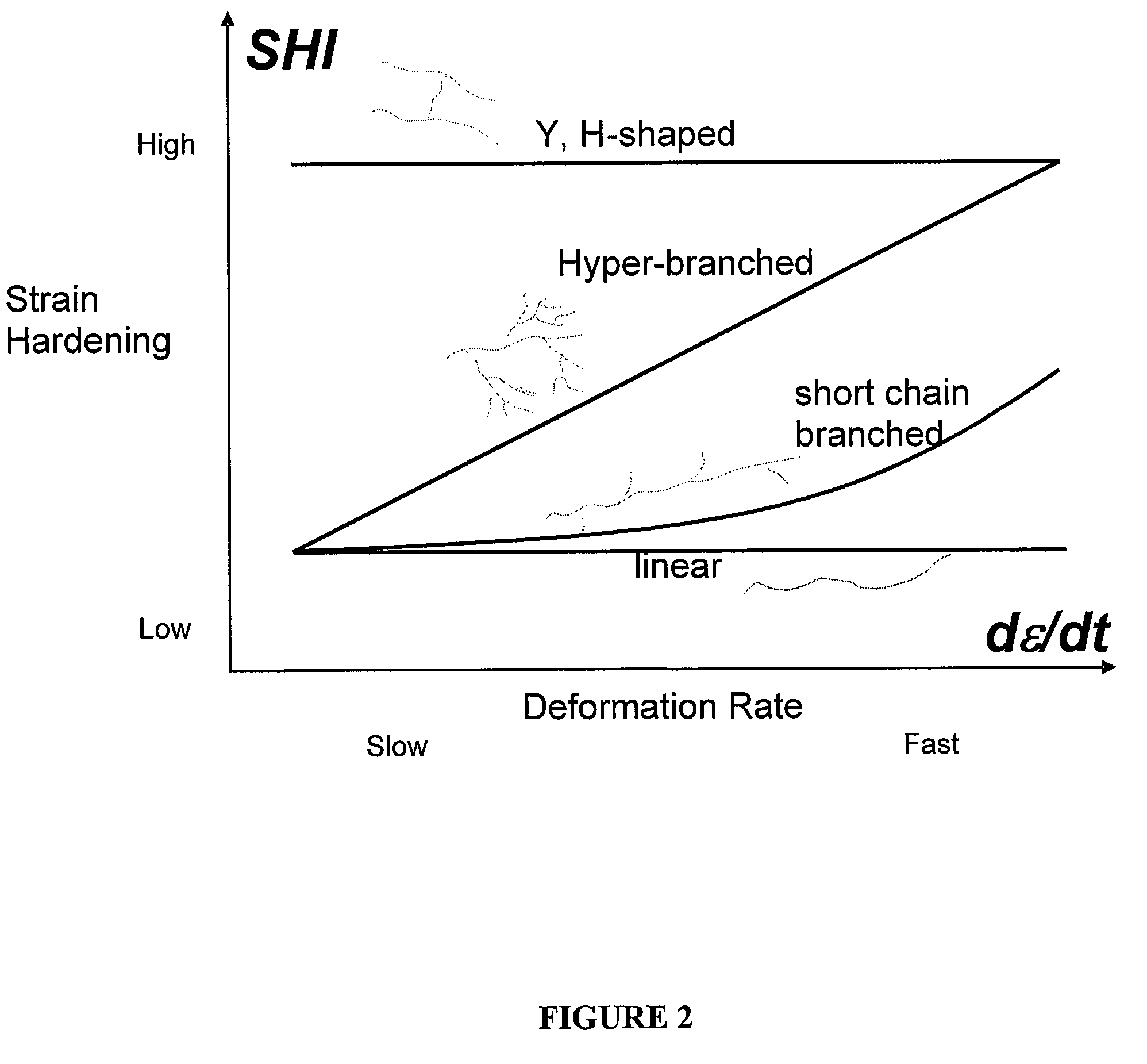Polypropylene foam
a polypropylene foam and polypropylene technology, applied in the field of polypropylene foam, can solve the problems of reducing the impact strength of the foam, limiting the use of polypropylene foam preparation, and many polypropylene materials have low melt strength and/or low melt extensibility, so as to improve the foam surface properties, improve the impact strength, and improve the effect of foam surface properties
- Summary
- Abstract
- Description
- Claims
- Application Information
AI Technical Summary
Benefits of technology
Problems solved by technology
Method used
Image
Examples
example 1
[0238]A support-free catalyst has been prepared as described in example 5 of WO 03 / 051934 whilst using an asymmetric metallocene dimethylsilyl [(2-methyl-(4′-tert.butyl)-4-phenyl-indenyl)(2-isopropyl-(4′-tert.butyl)-4-phenyl-indenyl)]zirconium dichloride.
[0239]Such catalyst has been used to polymerize a polypropylene copolymer with 4 mol % ethylene in the Borstar process, known in the art.
[0240]The material properties of the polymer are shown in Table 4.
PUM
| Property | Measurement | Unit |
|---|---|---|
| temperature | aaaaa | aaaaa |
| wt % | aaaaa | aaaaa |
| melting point | aaaaa | aaaaa |
Abstract
Description
Claims
Application Information
 Login to View More
Login to View More - R&D
- Intellectual Property
- Life Sciences
- Materials
- Tech Scout
- Unparalleled Data Quality
- Higher Quality Content
- 60% Fewer Hallucinations
Browse by: Latest US Patents, China's latest patents, Technical Efficacy Thesaurus, Application Domain, Technology Topic, Popular Technical Reports.
© 2025 PatSnap. All rights reserved.Legal|Privacy policy|Modern Slavery Act Transparency Statement|Sitemap|About US| Contact US: help@patsnap.com



